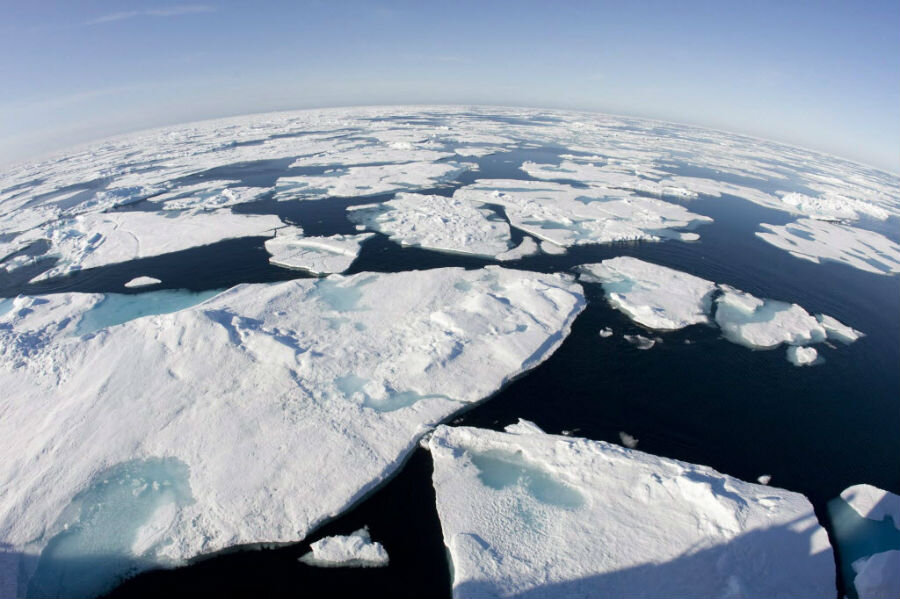Watch as warm temperatures chew into old Arctic ice
Scientists have warned of the melting of Arctic ice for years. As 2016 stands ready to be crowned the hottest year on record, the effects of that heat are being most acutely felt by the ice-bound regions at the northern pole of our planet.
Researchers at NASA have noted a new trend in the warming story in the extreme north. Not only is seasonal ice melting into the ocean, but the older ice that has remained constantly frozen, sometimes for decades, is also showing signs of significant thinning. The oldest ice in the Arctic has traditionally served as a line of defense against warming, protecting the northern ice cap's integrity through normal seasonal changes. But as the ocean continues to warm, so does the polar cap, leaving the future of the Arctic ice uncertain.
Thanks to decades of observing Arctic ice, scientists are beginning to piece together longer-term trends in the effect of climate change on older patches of ice. Using these observations, NASA scientists have created a new visualization of the ice cap shrinking and shifting with the seasons since 1984.
"What we’ve seen over the years is that the older ice is disappearing," said Walt Meier, a sea ice researcher at NASA’s Goddard Space Flight Center in a statement. "This older, thicker ice is like the bulwark of sea ice: a warm summer will melt all the young, thin ice away but it can’t completely get rid of the older ice. But this older ice is becoming weaker because there’s less of it and the remaining old ice is more broken up and thinner, so that bulwark is not as good as it used to be."
The team used passive microwave satellite images, weather data, and buoys to track the status of older ice. Sea ice that survives multiple melting seasons gets thicker with age, about 10 to 13 feet thick compared to 3 to 7 feet of thickness for seasonal ice during its first year. But tracking the overall trends in the status of the ice cap can be tricky.
"On a week-to-week basis, there are weather systems that come through, so the ice isn’t moving at a constant rate: sometimes the Beaufort Gyre reverses or breaks down for a couple weeks or so, the Transpolar Drift Stream shifts in its direction … but the overall pattern is this one," said Dr. Meier in the statement. "Then the spring melt starts and the ice shrinks back, disappearing from the peripheral seas."
According to data collected by the National Snow and Ice Center, arctic ice reaches its seasonal minimum in September. Last month saw a sea ice extent average of 4.72 million square kilometers (1.82 million square miles), the fifth lowest in the satellite record. However, the absolute minimum for 2016 was a statistical tie with 2007 as the second lowest minimum ice coverage on record. The problem of melting ice this year has been further compounded by unusually warm atmospheric temperatures in the Arctic, which is continuing to slow the usual post-September ice recovery.
With older Arctic ice no longer holding back much of the seasonal ice loss, rising ocean levels and shifting weather patterns from changing ocean temperatures in the extreme north could create significant consequences for many regions across the globe, particularly among smaller island nations. Recent international accords such as the Paris Agreement and Montreal Protocol amendment in Kigali hope to curb the production of greenhouse gases and slow climate change, but even with agreements like this in place, many scientists are still far from optimistic.
"The overall trajectory is clear – sometime in the next few decades, maybe as early as 2030, we’ll wake up to a September with no Arctic sea ice," Mark Serreze, director of the National Snow and Ice Data Center, told The Washington Post.
In scientific terms, Dr. Serreze is not referring literally to a zone completely devoid of ice. He refers instead for scientific definition of "ice free," in which the Arctic has a coverage of ice less than 1 million kilometers. But while this minimum state could happen within our lifetimes, it does not preclude Arctic refreezing, especially with support from genuine international efforts to curb warming trends.






